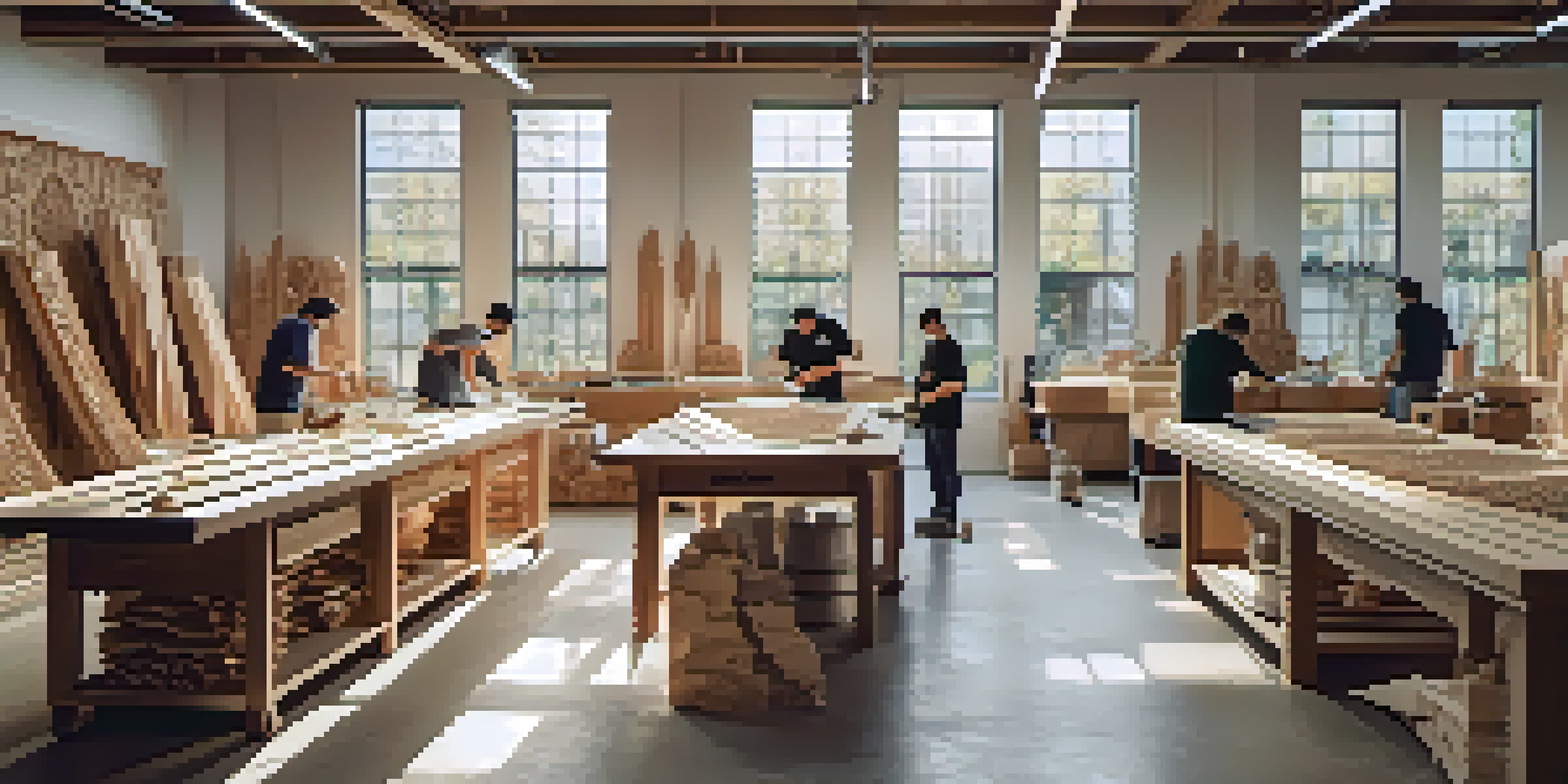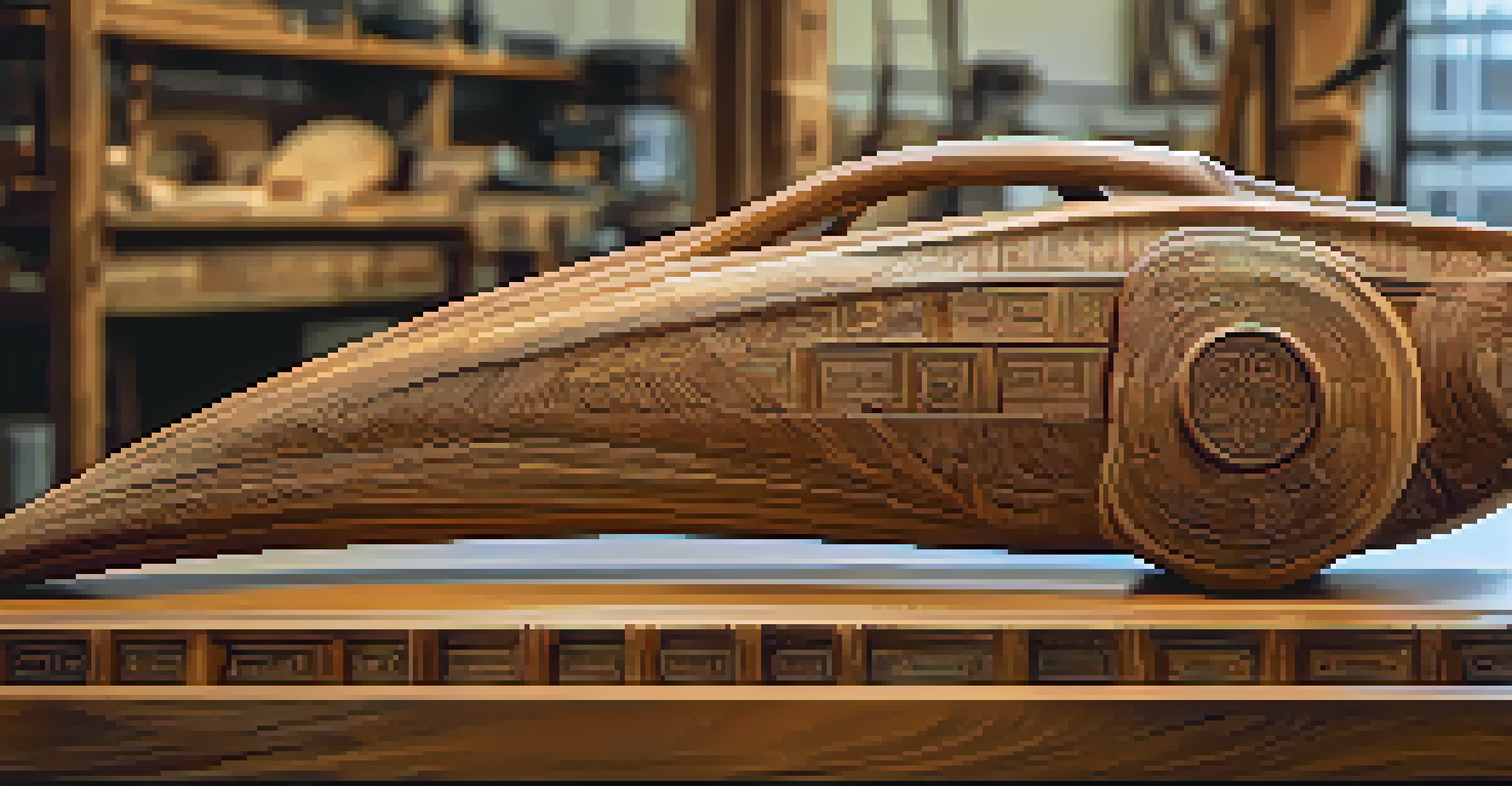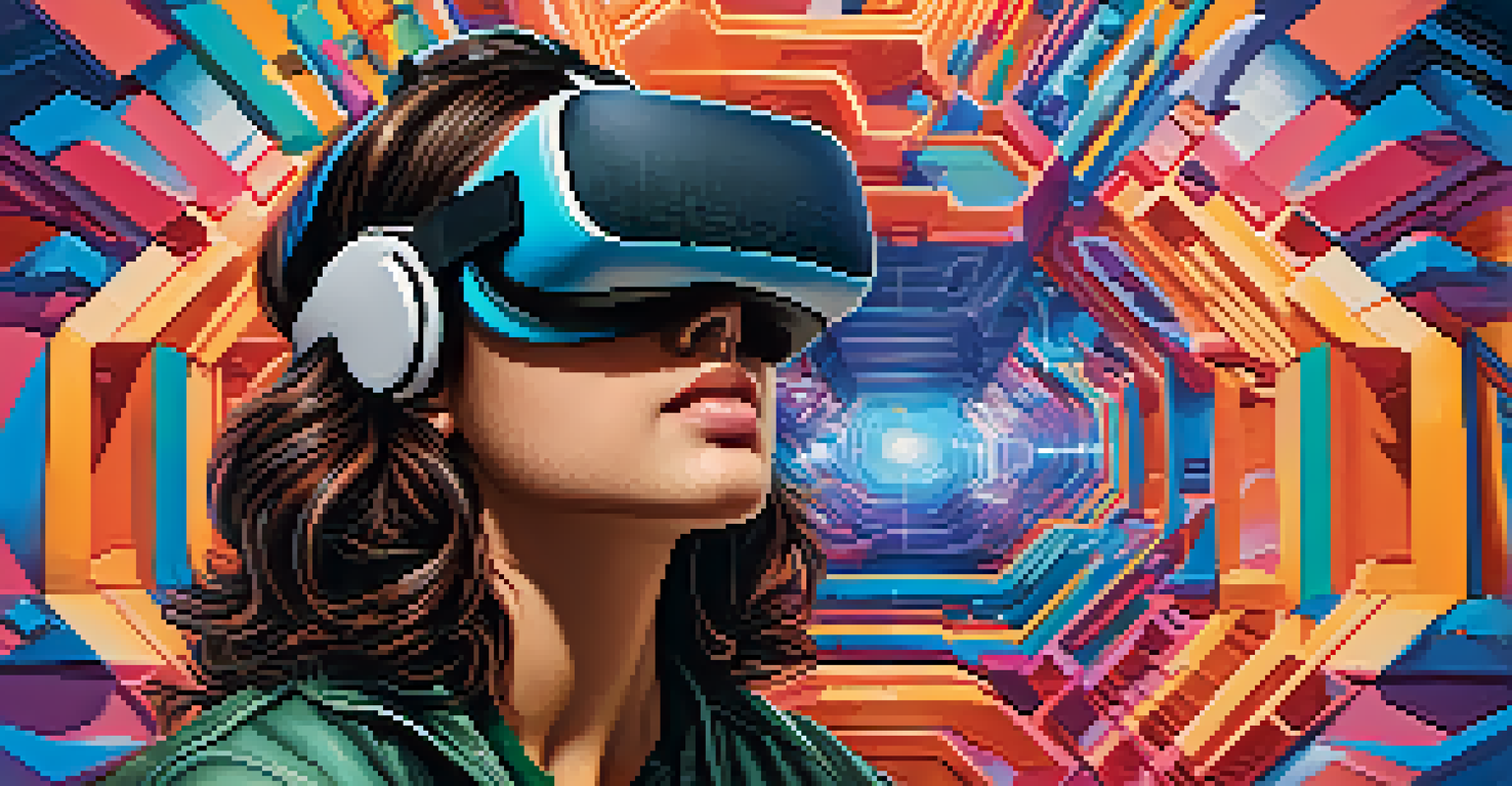The Rise of Digital Carving: Innovations and Trends

What is Digital Carving and Why It Matters
Digital carving refers to the process of using computer-controlled tools to create intricate designs and shapes in materials like wood, stone, and metal. This technology has revolutionized traditional carving methods, making it easier to achieve precision and consistency in every piece. By combining digital design software with CNC (Computer Numerical Control) machines, artisans can bring their visions to life with incredible accuracy.
Technology is best when it brings people together.
The importance of digital carving lies in its ability to democratize art and craftsmanship. Artists and makers who may not have traditional carving skills can now experiment and create stunning pieces using digital tools. This accessibility opens the door for innovation, allowing a broader range of people to explore their creativity and produce high-quality work.
As digital carving continues to grow, it has also sparked a movement toward sustainable practices. With the ability to optimize material usage and reduce waste, digital carving aligns with the increasing demand for environmentally friendly production methods. This combination of technology and sustainability is important for both artists and consumers.
The Evolution of Carving Technology
The journey of carving technology has come a long way from traditional hand tools to sophisticated digital machinery. Initially, artisans relied heavily on chisels and mallets, which required years of practice to master. Today, with the advent of digital carving, even those new to the craft can create impressive works by leveraging advanced software and machinery that automate the carving process.

Recent innovations in carving technology, such as 3D scanning and modeling, have further enhanced the creative possibilities. Artists can now scan physical objects, manipulate them digitally, and replicate them with precision. This blending of the physical and digital worlds not only streamlines the design process but also allows for intricate detailing that would be incredibly difficult to achieve by hand.
Digital Carving Democratizes Art
Digital carving allows artists without traditional skills to create intricate designs, fostering innovation and creativity.
Moreover, the rise of user-friendly software has made it easier for hobbyists to dive into digital carving. Programs are now designed with intuitive interfaces, allowing users to focus on their creativity rather than getting bogged down by technicalities. As technology evolves, so does the potential for new artistic expressions.
Key Trends in Digital Carving Today
One of the most notable trends in digital carving is the increasing integration of augmented reality (AR) and virtual reality (VR) into the design process. These technologies allow artists to visualize their carvings in a 3D space before committing to the actual material. With AR and VR, creators can experiment with dimensions and perspectives, leading to more innovative and imaginative designs.
Art is the most beautiful of all lies.
Another trend is the rise of customization in digital carving. Consumers are increasingly seeking personalized products, and digital carving easily meets this demand. Whether it’s custom furniture, personalized gifts, or unique art pieces, the ability to tailor designs to individual preferences has become a hallmark of the digital carving industry.
Additionally, the use of eco-friendly materials is on the rise within digital carving. As awareness of environmental issues grows, artists are looking to source sustainable materials that reduce their carbon footprint. This trend not only appeals to conscious consumers but also encourages the development of new, innovative materials that can be used in carving.
The Role of Education in Digital Carving
Education plays a crucial role in the rise of digital carving, as more institutions and online platforms offer courses and workshops tailored to this craft. These educational resources empower aspiring artists to learn essential skills and techniques, fostering a new generation of digital carvers. From understanding software to mastering CNC operation, education is key to unlocking creative potential.
Moreover, community engagement through online forums and social media has created a supportive environment for learners. Artists can share their experiences, seek advice, and showcase their work, fostering collaboration and inspiration across the globe. This sense of community is vital for those venturing into digital carving, as it provides encouragement and resources.
Sustainability in Digital Carving
This technology supports eco-friendly practices by optimizing material usage and reducing waste in the crafting process.
As educational offerings expand, we can expect digital carving to gain even more traction. Schools and makerspaces are increasingly integrating digital fabrication tools into their curricula, ensuring that future artisans are well-equipped to thrive in the evolving landscape of craftsmanship.
Challenges Facing Digital Carving Artists
While digital carving opens up exciting possibilities, it also presents unique challenges for artists. One significant hurdle is the steep learning curve associated with mastering software and machinery. For many, the initial investment in equipment and training can be daunting, potentially discouraging newcomers from exploring this innovative craft.
Additionally, the rapid pace of technological advancement can be overwhelming. Artists may find it challenging to keep up with new software updates, tools, and techniques. This constant evolution necessitates ongoing learning and adaptation, which can be both a source of frustration and motivation for creators.
Lastly, navigating the balance between traditional craftsmanship and digital innovation can pose a philosophical challenge for many artists. Some may feel that digital carving lacks the soul and authenticity of hand-carved pieces. The key is finding a personal balance that honors traditional techniques while embracing the advantages of technology.
The Future of Digital Carving
As we look ahead, the future of digital carving appears bright and full of promise. Advancements in artificial intelligence (AI) are set to revolutionize the design process, enabling machines to learn from artists and suggest improvements. This evolving relationship between human creativity and AI could lead to unprecedented artistic expressions and efficiencies in the carving process.
Moreover, the global market for digital carving is expanding, with more artisans seeking to showcase their work online. E-commerce platforms and social media provide avenues for artists to reach wider audiences, fostering a dynamic marketplace for unique, handcrafted products. This trend not only supports individual artists but also encourages the appreciation of craftsmanship in the digital age.
Education Fuels Digital Carving Growth
Access to courses and community support empowers aspiring digital carvers to learn essential skills and techniques.
Ultimately, as digital carving continues to gain traction, it will likely inspire further innovations in materials, tools, and techniques. By pushing the boundaries of what is possible, digital carving is set to play a pivotal role in shaping the future of art and craftsmanship.
Conclusion: Embracing the Digital Carving Revolution
In conclusion, the rise of digital carving represents a remarkable fusion of technology and artistry that is reshaping the creative landscape. As innovations and trends continue to emerge, artists are empowered to explore new realms of creativity and expression. The accessibility of digital tools is breaking down barriers, inviting a diverse range of voices into the world of carving.
Furthermore, the emphasis on sustainability and personalization reflects a broader cultural shift towards responsible consumption and individual expression. As consumers increasingly seek unique, eco-friendly products, digital carving is well-positioned to meet these demands head-on.

Ultimately, embracing the digital carving revolution means celebrating both tradition and innovation. By honoring the skills of the past while fully engaging with the possibilities of the future, artists can carve out a vibrant and sustainable path in the world of creative expression.